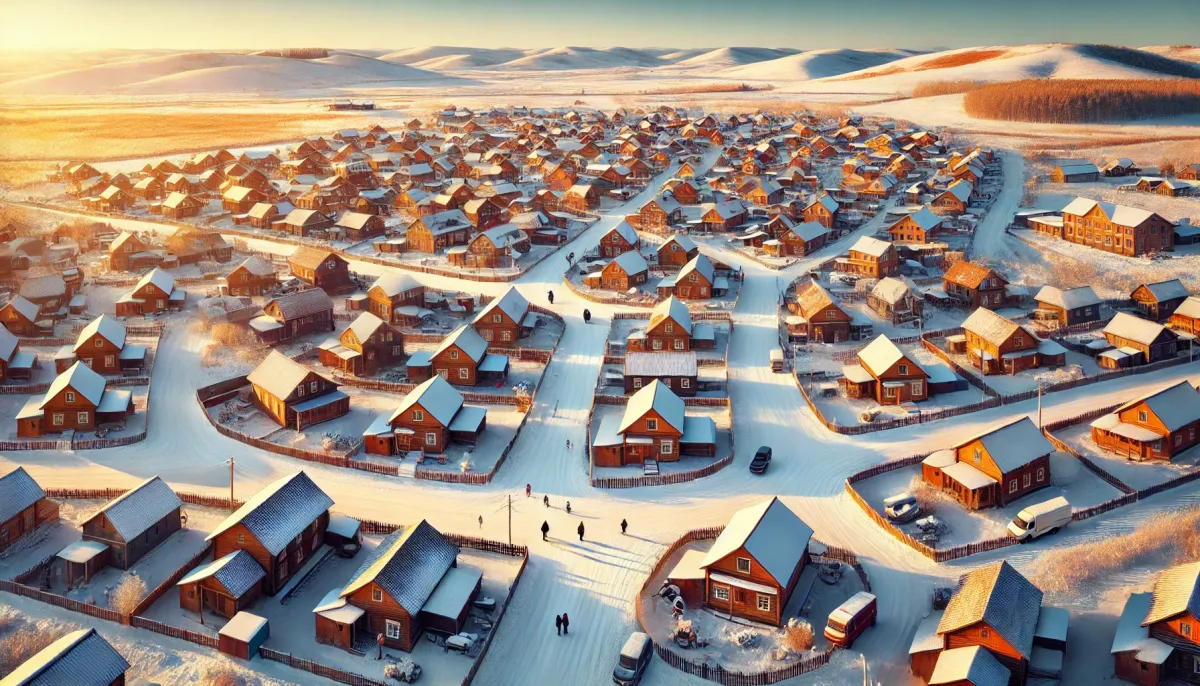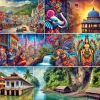Hey everyone, Mark here! As a seasoned backpacker with a penchant for exploring Asian metropolises and hidden gems, I recently embarked on an unforgettable journey to Mohe, a county nestled beneath the Greater Khingan Range in Heilongjiang Province. They call it China's northernmost county, and trust me, the experience was unlike anything I've ever encountered.
Mohe: A Town of Extremes
Mohe boasts a population of just over 80,000. While that might seem substantial, I learned that in the context of China, it's considered quite small. This unique location houses China's northernmost village, formerly known as Da Cao Dian Zi Cun, situated at 53 degrees north latitude. Now, let me clarify something: this isn't actually inside the Arctic Circle (that's much further north!), but its proximity earned it the catchy moniker "Beiji Cun," or North Pole Village.
This strategic location borders not only Tahe County to the east but also the Ergun Right Banner of Inner Mongolia to the west, separated only by a river from Russia. This proximity explains the incredibly frigid climate; Mohe experiences some of China's lowest temperatures, plummeting to a bone-chilling -40°C (-40°F) in winter—the coldest county in all of China. Historical records even document temperatures as low as -52°C (-61.6°F)! Eight months out of the year, temperatures stay below freezing. Let's just say packing long-sleeves is an absolute must.
Fact Sheet: Mohe & North Pole Village
| Feature | Description |
|---|---|
| Location | Heilongjiang Province, China, beneath the Greater Khingan Range |
| Population | Approximately 80,000 (county), ~700 (North Pole Village) |
| Latitude | 53° North (North Pole Village) |
| Climate | Extremely cold, with winters reaching -40°C (-40°F) or even lower |
| Notable Features | Closeness to the Russian border, “China's northernmost” everything! |
| Tourism | Relatively new, but growing rapidly |
Busting Myths: The "North Pole" Illusion
Before my trip, I was brimming with excitement, yet also a touch apprehensive. I'd read claims about witnessing the Northern Lights and experiencing the midnight sun in North Pole Village. The reality is far more nuanced. While geographically close to the Arctic, North Pole Village doesn't fall within the Arctic Circle (66° North latitude), which is defined by the imaginary line separating the North Frigid Zone and the North Temperate Zone. Therefore, witnessing the Northern Lights or the midnight sun here is highly improbable. The aurora borealis is a phenomenon requiring extremely dark skies and is best viewed well within the Arctic Circle. The closest you'll get to the midnight sun is exceptionally long daylight hours in summer, but the sun does still set.
This doesn’t diminish the charm of North Pole Village. Its unique appeal lies in its remoteness, rustic charm, and the fact that everything here claims the title of "northernmost in China"—from the post office to local guesthouses.
Beyond the Hype: A Unique Cultural Experience
What truly impressed me was the lack of heavy commercialization. Instead, I found a strong sense of community and a pristine natural environment. The air was crisp and clean, and the ecological preservation was remarkable. In summer, it’s not uncommon to see daylight well into the night.
The local cuisine, though simple, reflects the region’s unique environment and agricultural practices. The distinct climate necessitates different farming methods than what I am accustomed to seeing in the US, a fact that was fascinating to witness firsthand.
China's Northern Frontier: A Glimpse into History
My journey to Mohe also led me to contemplate China's complex relationship with Russia, its northern neighbor. The border between the two countries is vast, and their history intertwined. From the Mongol conquests to the Tsarist expansion and the modern-day relationship, this region is a testament to centuries of political and cultural exchange.
The long history of the relationship, including the sensitive issue of Russian annexation of territories, was a prominent theme of the local culture and something many people felt strongly about. The current peace is largely attributed to mutual economic dependence and the stability that a clear border provides. While the political landscape is complex, the local people displayed genuine warmth and hospitality.
Discovering Mohe's Hidden Treasures
Mohe isn't just about extreme weather. It's about the resilience of the people who call it home, their unique way of life adapted to the harsh environment, and the extraordinary views that come with living so close to the Arctic.
Things to see and do in Mohe:
- North Pole Village: Visit the "northernmost" post office, school, and other establishments.
- Local Guesthouses: Experience authentic rural hospitality.
- Observe daily life: Watch how locals have adapted to the unique environment.
- Visit the local markets: Sample unique regional foods.
- Enjoy the scenery: Soak in the vast expanses of nature.
My trip to Mohe was far more than just visiting a cold village; it was an immersion in a unique cultural landscape, a testament to human resilience, and a reminder of the fascinating history connecting Russia and China. If you’re looking for an adventurous and unconventional travel experience, I highly recommend adding Mohe to your bucket list.







